Anyone who’s into JDM car culture has heard stories about the Midnight Club, or Mid Night Racing Team, an underground street racing team that took illegal racing to a whole new level.
Over the years, this secretive group of outlaws became the inspiration for anime and manga series, as well as movies, such as Wangan Midnight. Even the Midnight Club video games were born out of admiration for these street racers.
Those who’ve never heard of the Midnight Club might be confused as to why and how a group of illegal street racers has earned worldwide recognition, but it’ll soon become apparent that Midnight Club Japan is not your average group of unorganized racers.
In this article, we’ll take a closer look at the story behind Midnight Club Japan, who the members are, their favorite cars, and what the club does today.
Story of the Midnight Club
In the 1980s, four guys in their 20s founded Midnight Club Japan, they were Yoshida, Kato, Terazawa, and Yamada.
Eichii Yoshida would become the chairman of the group. He’d previously been a member of the American Car Club in the late 1970s and early 1980s.
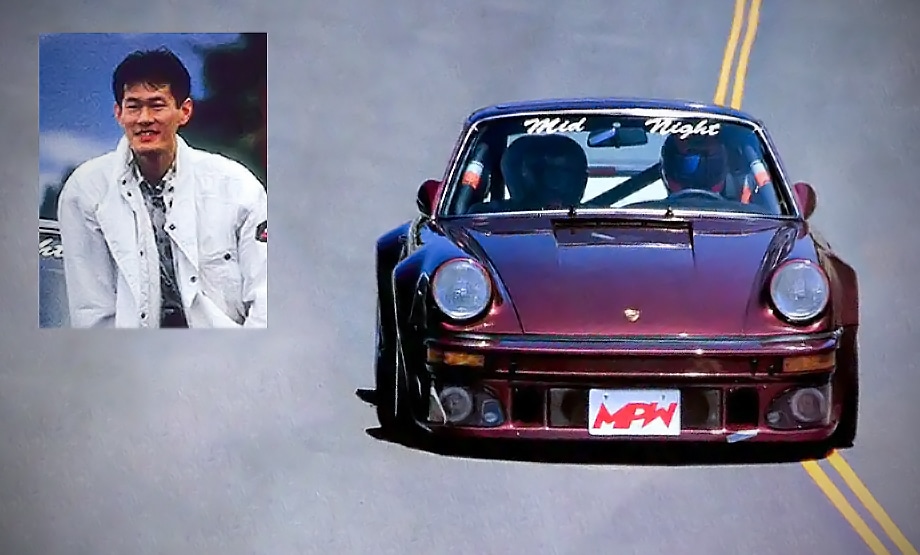
American cars were popular in Japan back then, and owners used to race them on public roads at night.
As Yoshida left the American Car Club, he met the other Midnight Club founders, and they took their highly modified tuner cars racing on Japan’s motorways.
They chased speed records that would soon make them legends in the Japanese street racing scene.
The Midnight Club Japan team would meet at Yoshida’s shop every Saturday and then head to their favorite road.
In the early 1980s, that was the Tomei expressway, but in 1985 they began racing on the road that really made them famous — the brand-new, 37-mile Wangan Bayshore route along the coast of Tokyo.
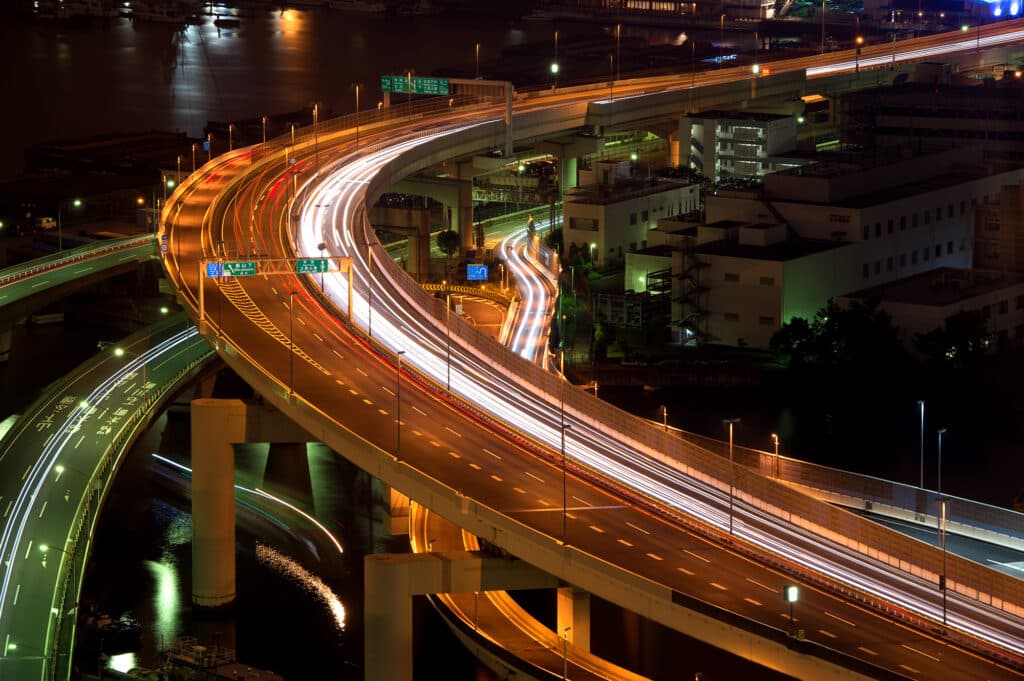
They would race each other but also invite other street racers to join them in some “friendly” competition where the stakes were much higher.
If a Midnight Racing Team member lost to someone outside the club, they would no longer be a member, so the stakes were high.
On the Wangan straights, they would often drive in excess of 200 mph, and even some corners were dealt with at 160+ mph — it wasn’t uncommon for them to refuel twice a night, which gives you an idea of how hard they drove.

Perhaps less known is the fact that some of the Midnight Club Japan guys also raced on the Hakone Turnpike, an 8.5-mile stretch of serpentine-like tarmac that twisted its way up the mountain, with elevation going from 300 feet above sea level and ending at 3,300 feet.
Hakone racing was very different from the Wangan runs. The speeds were nowhere close to the Vmax runs that could only be done on the highways, but that didn’t make them any less dangerous.
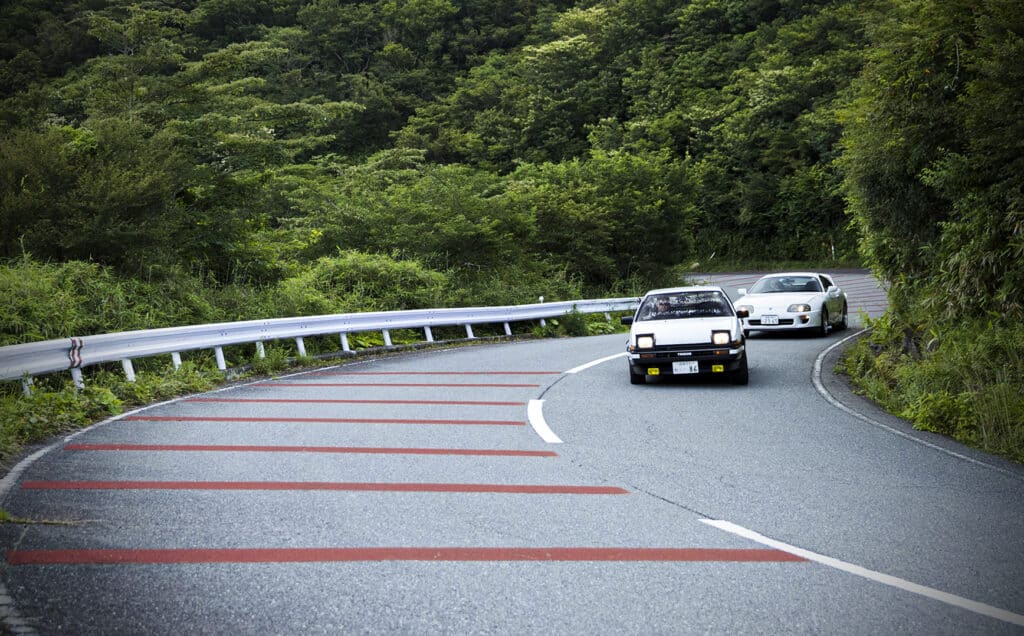
Midnight’s Kometani and his 260 hp Porsche 930 Turbo were virtually unbeatable on this road, setting the record time of 5 minutes 55 seconds, averaging close to 88 mph — on a road where any accident could potentially be fatal.
Not to mention that he did this behind the wheel of a car that was popularly known as a widow maker at the time.
Legendary Midnight Club Japan Cars
There’s no doubt that former Midnight Club Japan chairman Yoshida’s Porsche 930 Turbo is the most famous of all the cars associated with the team.
There were a couple of reasons why the Midnight guys loved Porsches, one being that it was a foreign car, so it didn’t have to adhere to the Japanese gentlemen’s agreement that limited domestic cars to a 112 mph top speed.
Porsches were also highly capable straight out of the box, and being a 3.3L turbo, it had plenty of tuning potential.
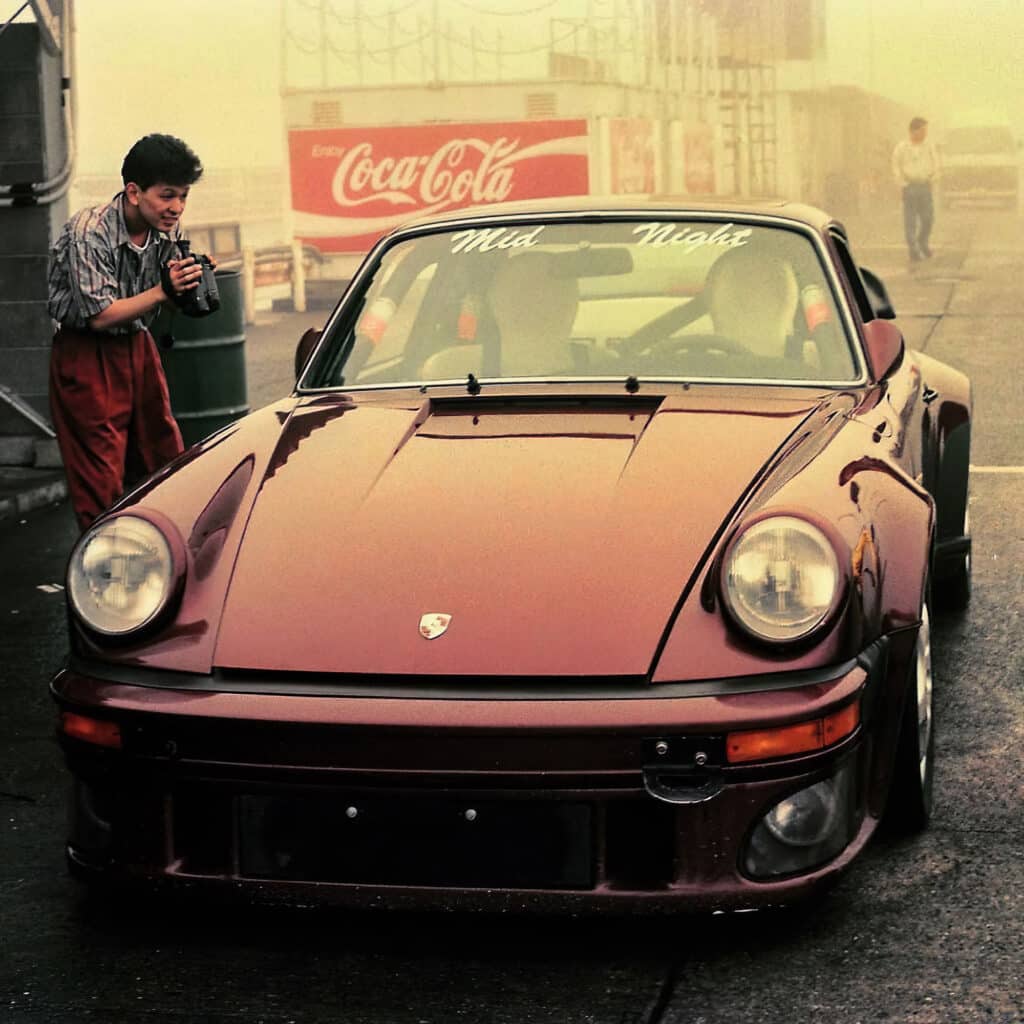
Finally, just like today, they were perceived as something a bit more luxurious and exotic than domestic cars.
Yoshida’s Porsche 930 was shipped to the Porsche Development Center Weissach in Germany on multiple occasions.
There, Porsche’s race car engineers and technicians upgraded the car using some tricks they’d learned from their racing program — they also added some secret car parts that not even Yoshida knew about.
On the outside, only the front bumper and NACA ducts in the rear side windows provided hints that there was something special about Yoshida’s weapon of choice.
However, below the surface, virtually everything had been upgraded, and it was more like a Porsche factory race car than a road car.
During high-speed runs, this 600+ hp Porsche 930 exceeded 200 mph, and it did so for a sustained period of time — no wonder it served as the inspiration for the Blackbird Porsche in the Wangan Midnight series.
Another Midnight Club Japan car that inspired the Wangan Midnight show was Toshi’s S130Z Nissan Fairlady.
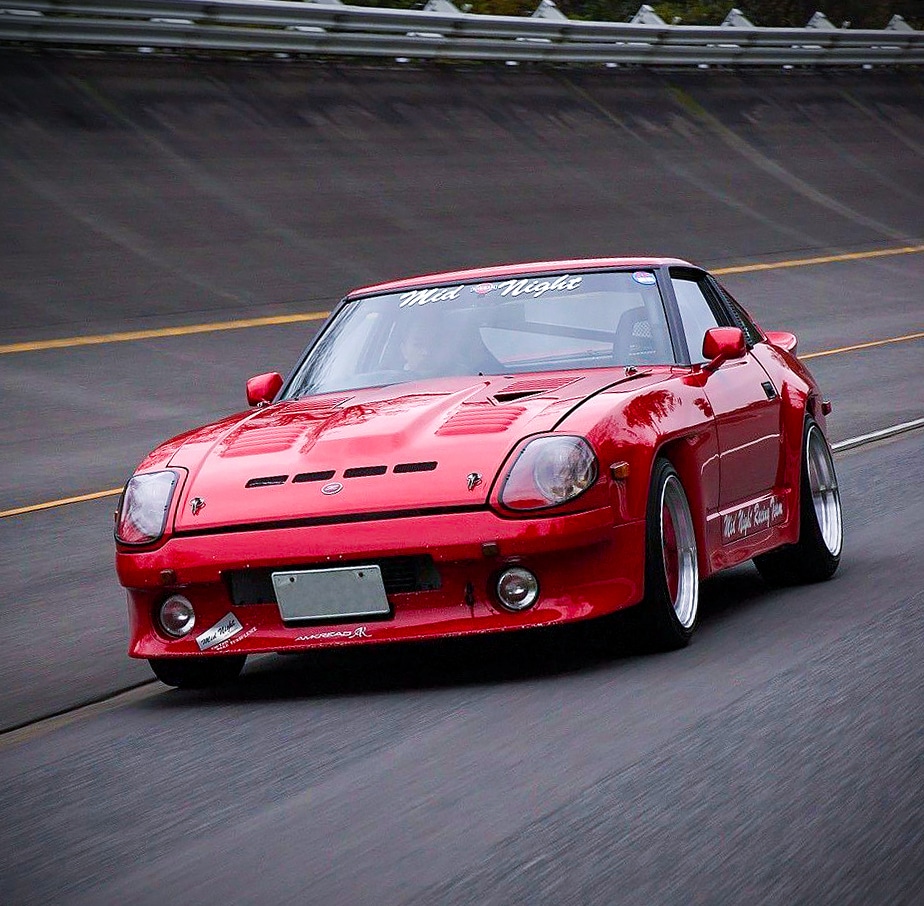
In Wangan Midnight, it’s portrayed as the Devil Z, a car that’s possessed and seems hellbent on killing its driver.
In real life, things weren’t quite that nefarious, but the 1978 Nissan was still a beast that produced in excess of 600 hp and managed top speeds of more than 186 mph.
The real-world Devil Z has been owned by multiple Midnight Club members over the years and is still in the club.
As we already mentioned, Porsches were popular with the Midnight Club Japan members, and in addition to Yoshida and Kometani, many other team members could be seen behind the wheel of Stuttgart’s finest.
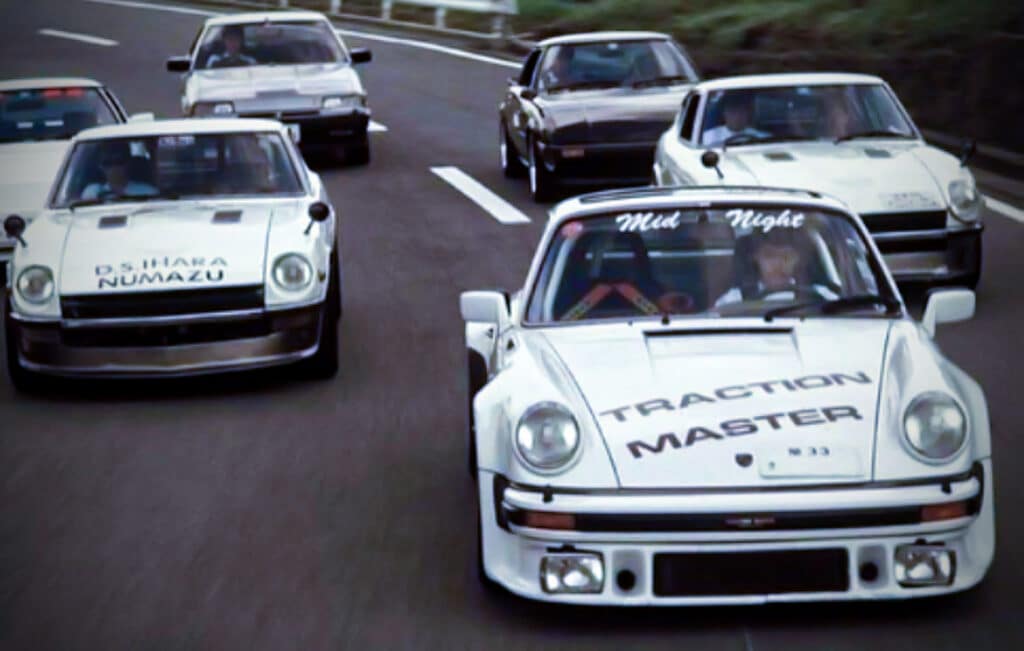
Sato drove the Approval/Promodet 964, which was the fastest Porsche in Japan in 1997 when he recorded a top speed of 206 mph.
Uwabo owns a pink Abflug twin-turbo 930 Porsche that produces anywhere between 680 and 800 hp, depending on setup, and it also features some aero mods.
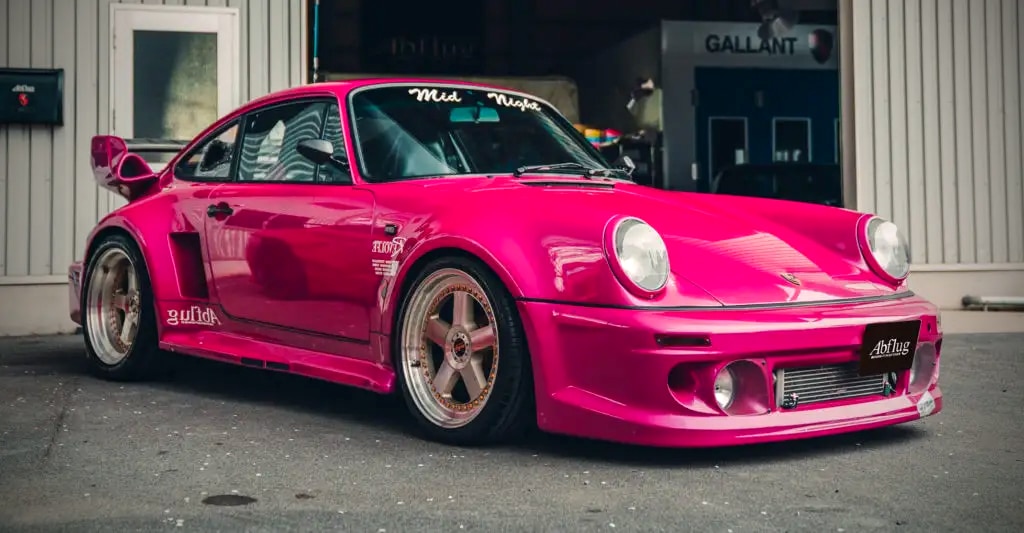
The Warm Bogner 930 was used as the Warm Yokohama tuning shop’s demo car and featured an eye-catching 935-influenced body kit.
Thanks to its 400 hp, it managed a top speed of 188 mph and would finish a quarter-mile run in less than 12.6 seconds.
Other cars that were popular with the Midnight Club Japan guys included:
- Various Nissan Skyline GT-Rs
- FC and FD Mazda RX-7
- A70 and A80 Toyota Supras
- Z32 Nissan 300ZX
- 1st-gen Honda NSX
- European exotics such as Ferraris
- A Lamborghini Countach
- A couple of Mercedes-AMG cars
Seeing as some of the members came from the American Car Club, it’s no surprise that back when Midnight Club Japan was first formed, American classics, such as Pontiac Trans Ams and Chevy Camaros, were a regular sight in their car lineup.
At a time when most car manufacturers struggled to break the 200 mph barrier, it’s nothing short of astonishing that the Midnight Club racers managed to do so repeatedly while keeping their cars reliable in the process.
Midnight Club Japan Members
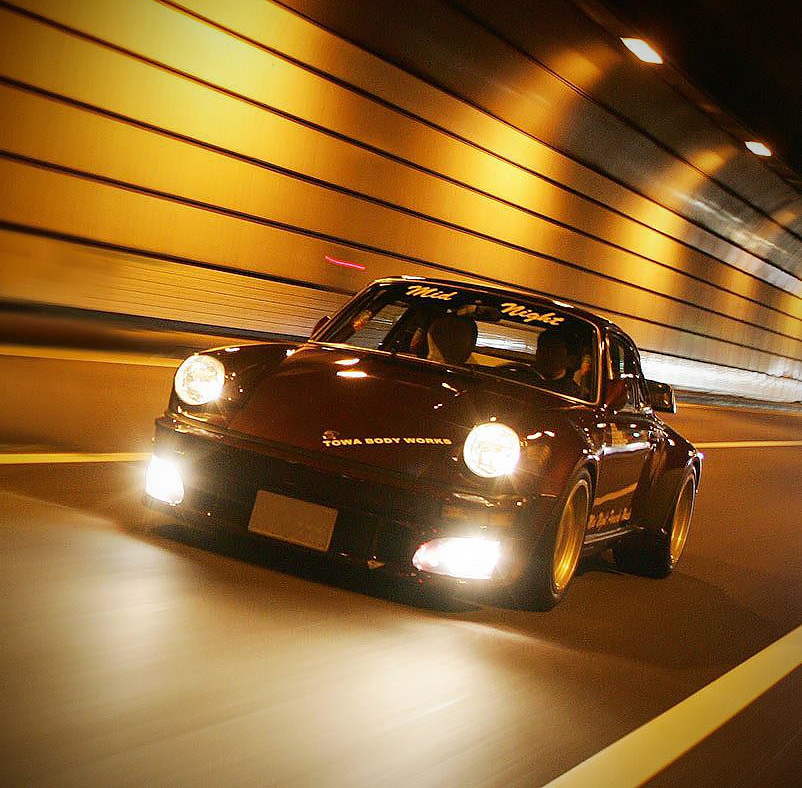
It’s commonly reported that the Midnight Club Japan members were anonymous businessmen.
Perhaps it was done on purpose by the Midnight team, so the authorities wouldn’t recognize them?
Or maybe it was because people thought only rich businessmen could afford these flashy cars?
Whatever the reason may be, that’s actually not the case at all.
These were regular people with careers in various fields, who just loved partaking in highly illegal street races in the wee hours.
We’ve already mentioned some of the names earlier in this article, and many of the original members are still part of the team. It’s rumored that Smokey Nagata was also a part of Midnight Club, but that’s not true.
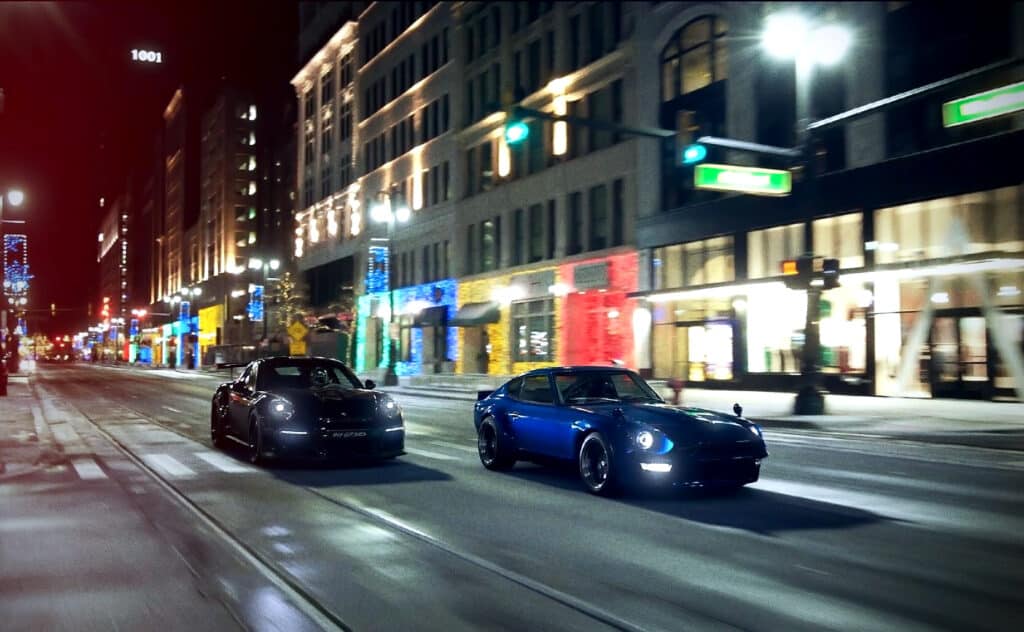
While they’ve obviously grown older, the club has attracted new people over the years and currently has around 30 members.
Founding member Eichii Yoshida has stepped down from the chairman role, with Tadao Tamura taking on that responsibility.
Back in the early days of the Midnight Club, membership could only be gained in a similar manner to that of a biker club.
Applicants were tested and their driving skills scrutinized, after all, the club didn’t want to risk putting someone who wasn’t comfortable, and relatively safe, behind the wheel at breakneck speeds.
Once the club members were comfortable with their driving, the hopeful ones would become apprentices, similar to the MC prospect period. They were given a pink Midnight sticker, not the silver one full members were rocking.
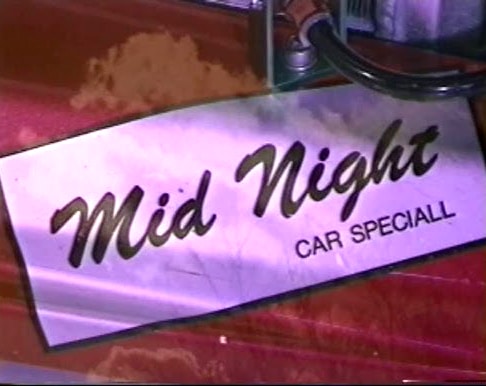
As apprentices, they’d have to attend all the team meetings and would only become full members if all the existing members unanimously voted them in — which could take as long as 5 years.
When that happened, the chairman would personally give them the coveted silver Midnight sticker.
Over the years, some people not related to the club have tried to pull a fast one by putting silver Mid Night stickers on their cars.

These were promptly removed by actual club members when spotted, and it also led to the club trademarking the name and logo.
The Midnight Club no longer races on public roads, at least not officially, so they don’t test prospective members’ street racing skills anymore.
Instead, future members need to show that they have a burning passion for car culture and are willing to commit to the club.
The Midnight Club Japan Crash That Changed Everything (or Did It?)
According to internet rumors, some club members were racing a group of Bosozoku bikers back in 1999.
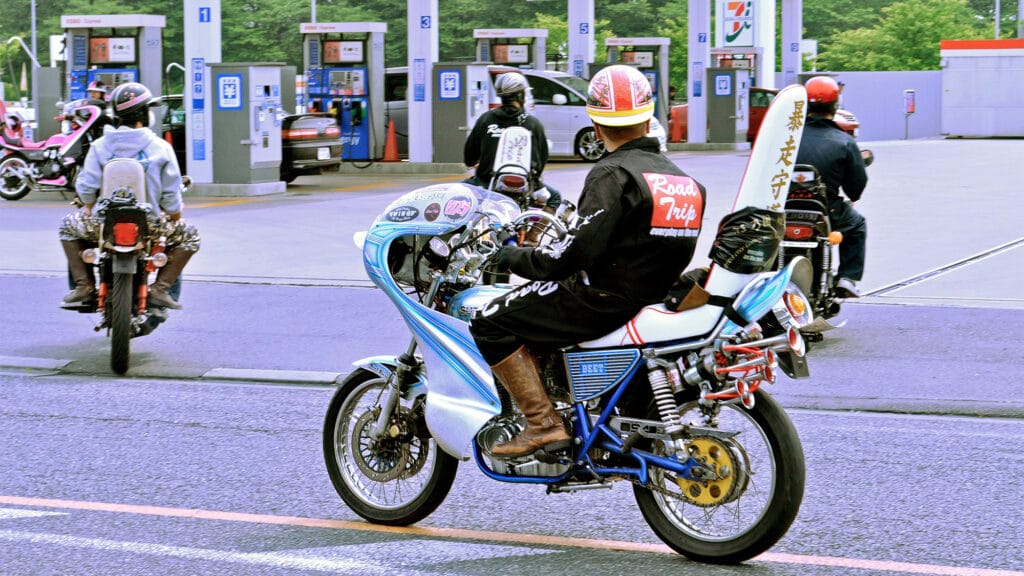
The race ended in a terrible accident that killed 8 people, and supposedly spelled the end of Midnight Club, as this violated their most important rule that stated they should never endanger other motorists.
However, it seems this is just another one of the many myths surrounding the club, as there is virtually no concrete evidence that such an accident ever happened.
It’s more likely that the club made the whole thing up, as they never really disbanded, and used it to keep police off their back.
Granted, we didn’t hear much about Midnight Club Japan following said accident, but seeing as they’re still around today, chances are they just dialed it down for a while, and then reemerged as a track driving club in 2020.
Concluding Summary

While we don’t want to idolize Midnight Club Japan’s actions, there’s no denying that they’ve had a massive impact on JDM culture around the world — even though many of their members drove European and American cars.
Known for driving at ridiculous speeds on public roads, they’re still regarded as one of the more responsible groups doing so.
Obviously, this is in contrast to, say, the Honda Civic-driving Kanjozoku and other groups such as the No Good Racing Team who used to play cat and mouse with the police while weaving through traffic.
Today, Midnight Club has transitioned into a group of track racers, but whenever the name is mentioned, our minds will always think of fast Porsche 911s and R32 Skyline GT-Rs.
What are your thoughts on the infamous Midnight Club? Let us know in the comments below.
If you found this article entertaining, share it with a friend! We appreciate your support.

